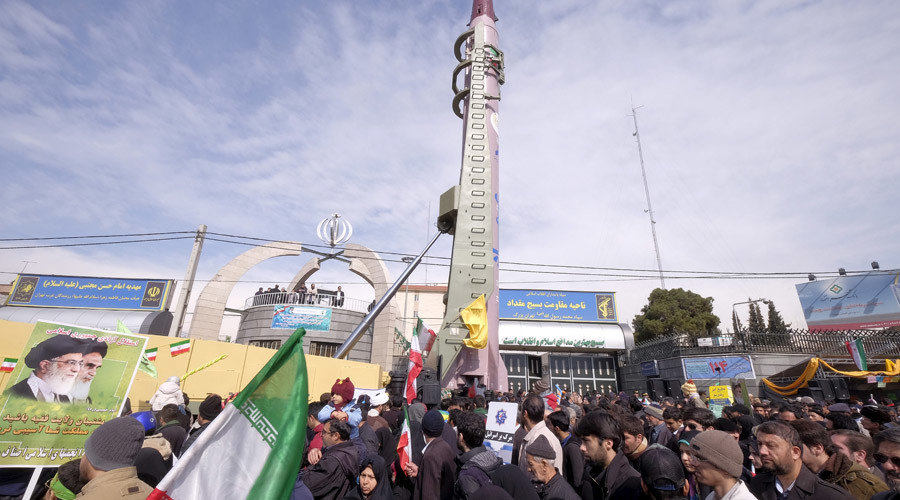
The test on Tuesday was intended "to show Iran's deterrent power and also the Islamic Republic's ability to confront any threat against the Revolution, the state and the sovereignty of the country," the Islamic Revolutionary Guard Corps statement published on its website said.
The Revolutionary Guard and the Iranian media did not specify which missiles were used in the test. The underground silos in Iran were first revealed to the public in October 2015, almost coinciding with the revelation of the Emad ballistic missile, and were said to be capable of firing "Iranian missiles of varying ranges." Iranian news channel Press TV used archive footage of an October test of the Emad missile when reporting the Tuesday test.
The Emad missile is believed to be developed from Iran's Shahab-3 missile. It is a liquid-propellant ballistic missile with a claimed range of 1,700km and a 750 kg payload. The missile's primary improvement is said to be a better guidance system of the re-entry vehicle, reportedly reaching an accuracy of 500 meters.
The US will push for an "appropriate response" to Iran's ballistic missile test by raising the issue in the UN Security Council, if the reports about the Tuesday test are confirmed, US State Department spokesman Mark Toner told journalists.
"We're aware of and following closely the reports that Iran has just conducted several ballistic missile tests," he said, adding that such tests would not violate the nuclear deal signed by Iran and world powers in July 2015, Reuters reports.
At the same time, he added that the US will "continue to aggressively apply [its] unilateral tools to counter threats from Iran's missile program."
The test in October was condemned by the US and its allies, with Washington saying the missile was "inherently capable of delivering a nuclear weapon," and that testing it violated UN Security Council Resolution 1929. Tehran denied the allegation, saying it has never tried to develop a nuclear weapon and hasn't designed any of its missiles to carry one.
The resolution tackled Iran's controversial nuclear program and was among those which expired in January, when the UN's nuclear watchdog the IAEA confirmed Tehran's compliance with the terms of a nuclear deal it struck last year with six leading world powers. In October, at the time of testing, the resolution was still in force.
The UNSC has since adopted another resolution, which called upon Iran not to undertake any work on missiles "designed to" deliver nuclear weapons.
Iran is currently undergoing a political transition, with President Hassan Rouhani and his allies securing in an election in February a majority of seats at the Assembly of Experts - the body tasked with electing the Supreme Leader of Iran, the most powerful figure in the country. The seat is now held by 76-year-old Ayatollah Ali Khamenei.
Some Iran watchers said that after the Rouhani-sponsored nuclear deal turned out to be a success, the conservative camp insisted on a demonstration of force to reassert Iran's strength.



Comment: It's hard to blame Iran for bolstering their military abilities, since the US has shown that it is always aggressively pursuing control and domination over any country that it deems as strategically important. Iran has allied itself with Russia, so it is very likely aware that despite public proclamations from the US, it will not stop itself from attempting to control Iran, either through overt or covert means. Only a fool would think the US has good intentions towards Iran.